Auschwitz concentration camp is one of the few solemn places you can visit in the world given its horrific history. The camp was built and operated by the German Nazi in German-occupied Poland during World War 2. It saw almost a million people exterminated within the camp grounds. Let’s pay the place of solemn history a visit with a walk-through.
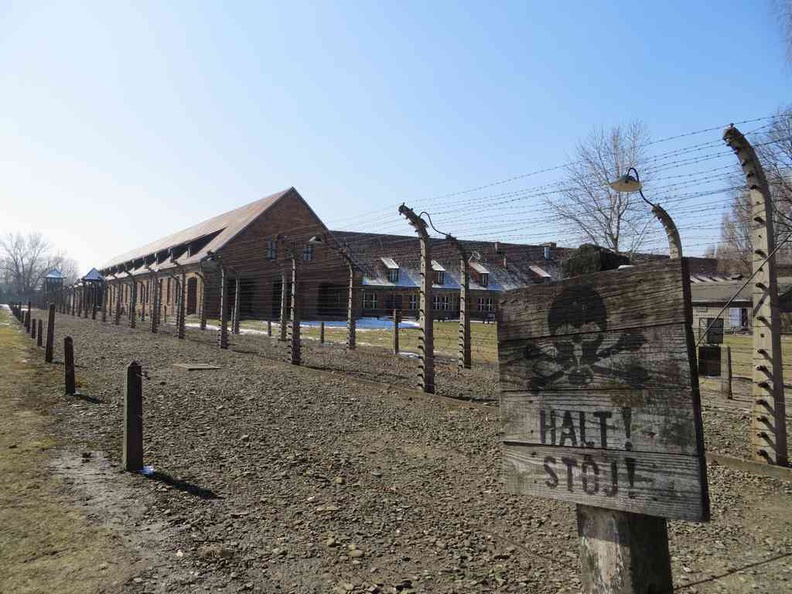
Today, Auschwitz concentration camp is a war museum and memorial. The site immortalises a grim reminder of the atrocities committed by the German Nazi in the war.
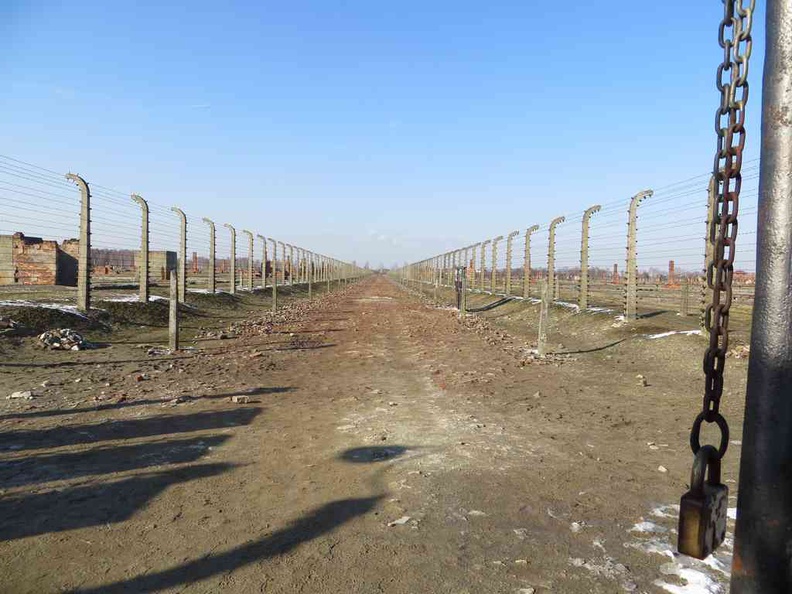
Getting there
Furthermore, the camp is located on the outskirts of the city of Poland. You could easily do a day trip from major cities like Krakow. The journey there is about an hour long 60km westbound journey. Also, it is rather accessible by private transport. Additionally, if you are in a group, you could charter a mini transport van through a agent, who usually bundle in ticket price at a discount.
Moreover, at the venue, a visitor center and ticketing counter now sits at the main entrance building to the concentration camp. Also, a misleading signboard greets you at the entrance of the concentration camp- “with work comes freedom”.
180 Panorama of Auschwitz camp main gate and entrance
Also, the Auschwitz-Birkenau camp here was the largest. It is home to more than 40 camps and sub-camps that made up the Auschwitz complex. You can view vast scale models of the camp in the museum galleries.
A grim gallery
Additionally, a perimeter electric fence and watch towers lines the outer perimeter of the concentration camp. Also, it serves as demarcation of camp boundaries and separates the prisoner living quarters to administration buildings.
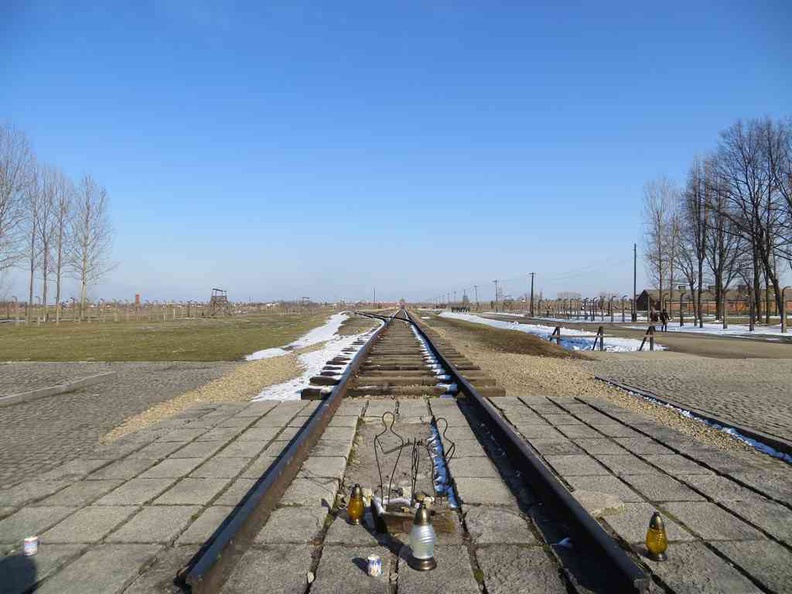
Also, a rail network into the camp transported all the prisoners of war (POWs) and displaced civilians into the concentration camp via train carriages. The people came expecting hard work to boost the German war machine.
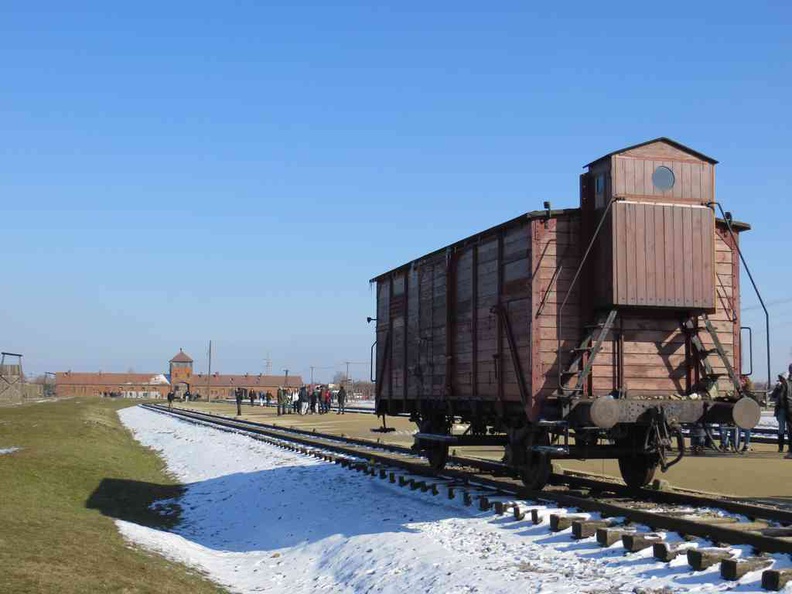
However, little do the prisoners know that many were sent here into Auschwitz to be exterminated. Albeit kept as a prisoner of war in inhumane conditions. Hence many would relate to Auschwitz as an extermination camp to a concentration camp.
360 Panorama at the center of the camp on the rails.
Mass extermination and genocide
Moreover, war crimes against humanity were committed in Auschwitz. The German Nazis saw the systematic extermination of the Jewish community, as well as prisoners deemed unable to contribute to the German war machine.
In all, over 1 million Jews, 150 Poles, 23,000 Gypsies, 15,000 Soviet and 25,000 unnamed POWs were brought into the camp. Also, most of the Jews were deported from Hungary during spring and summer months of 1944, arriving via 100 train boxcarts. They roll past an administrative building into a large fenced compound to be “sorted for work”.
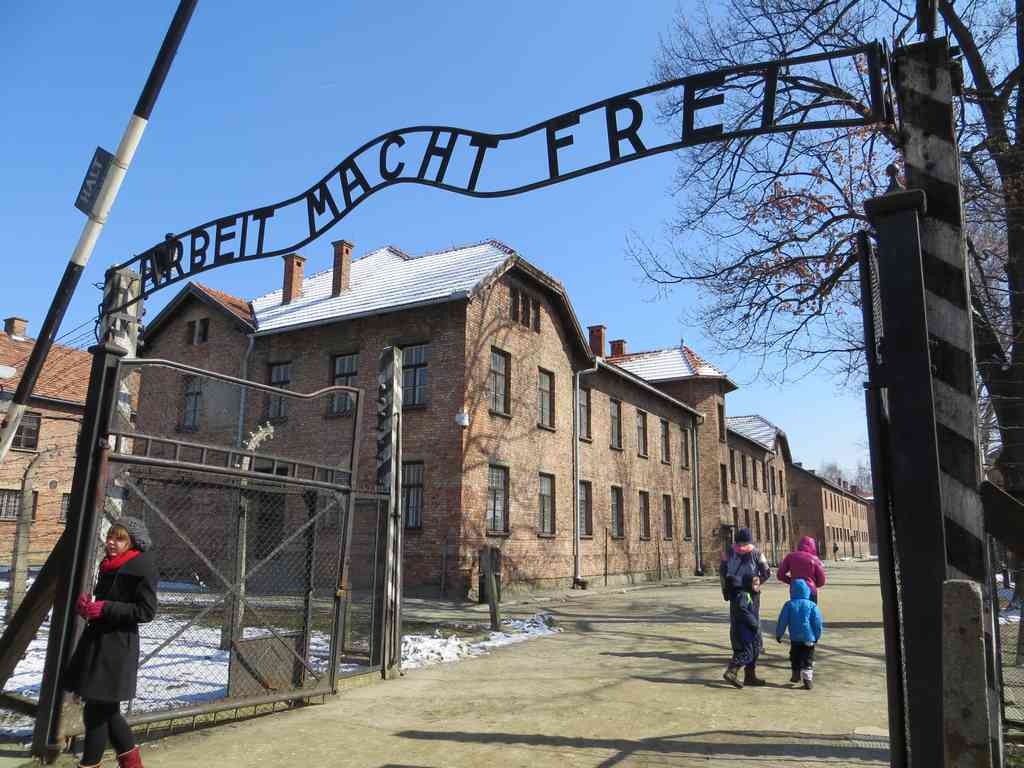
Also, this deceptive train station was disguised like a regular railway station. It has fake signs, timetables and a painted wall clock.
Furthermore, following this “prisoner sorting”, the victims were tricked to take an “entry welcome shower”, where a “new life awaits”. However, little do the prisoners know the showers are disguised as poison Zyklon gas dispensing points.
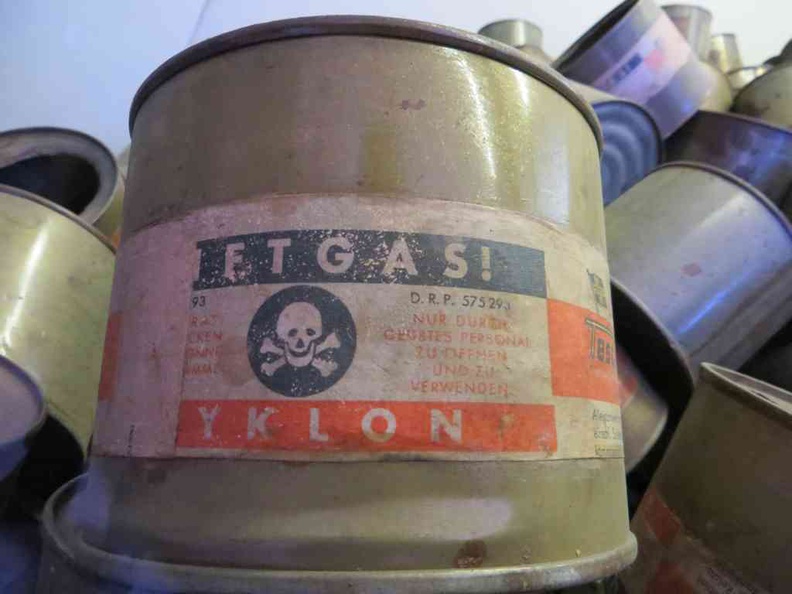
Also, the museum collections houses recovered cans of Zyklon B cans– evidence of crimes connected with the extermination of Jews by German Nazi in the camp. Sadly, almost 90% of the 1 million who died here were Jews, as part of Hilter’s planned extermination plans.
A systematic purge
The galleries speak of the Nazis sealing the doors of the underground shower rooms and completely filling it with Zyklon gas, poisoning and killing the occupants. Once the screaming stopped, the bodies cleared out in systematic efficiency at a go for the next batch. Also, the “shower rooms” were built underground and sound proofed to mask the screams during gassing,
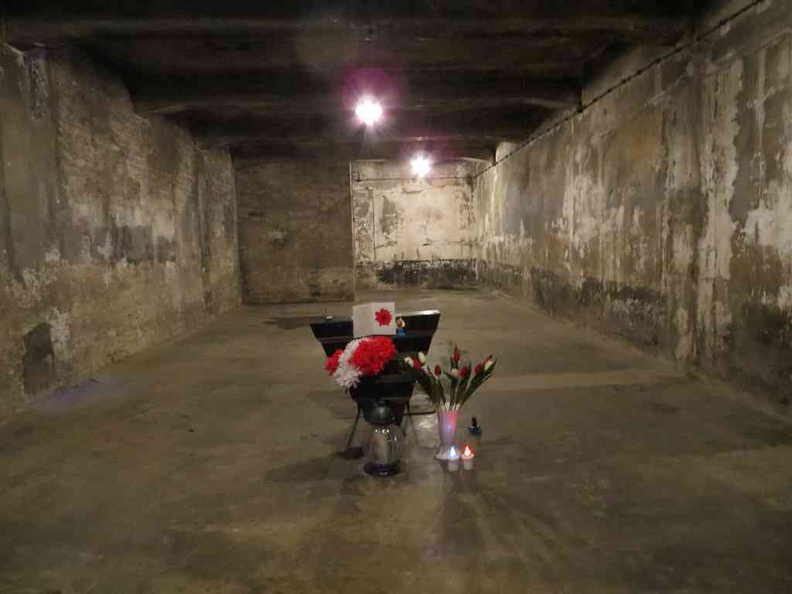
Survivors and POWs who worked in the camp told stories forced labour. Prisoners have to clear the bodies of their dead fellow countrymen and women after gassing. The Nazi “Candaian” team looted the bodies of personal belongings like jewelry and gold teeth. Thereafter, the dead bodies were mass-cremated on-site by prisoners.
Additionally, you also learn of grim recount stories of POWs running these cremation stacks 24/7 non-stop. Also, burning techniques include using different body sizes (like a fat women body) needed to keep the cremation fire going or give it a burning boost.
Moreover, based on recap moments by survivors first entering the camp, they speak of the camp having a gloomy ambience with hint of “smokey BBQ”. Little do they know of the atrocities running behind the scenes.
Notably, also, the museum touches on the implications faced by several German pharmaceutical companies post-war (like Bayer) which produces Zyklon gas in support these war crimes.
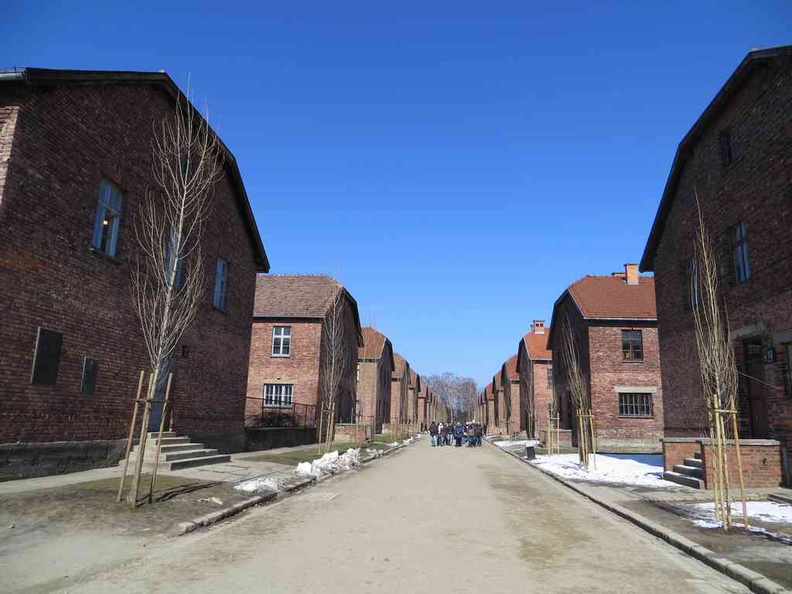
Inhumane living conditions
Any prisoner worthy to contribute to the war effort have their life’s spared, but put in inhumane and crowded living conditions in many of the prisoner barracks within the concentration camp. Also, the jail rooms were so overcrowded prisoners had to sleep in rows of three and on their sides on straw-stuffed mattresses.
Furthermore, those who survived the extermination lived in humiliating and cramped conditions. The bunks are in a bad state, cramped with rows of double beds. Even the latrine toilets are a mass bench located in the center of the outhouse building. Also, prisoners are hardly fed, with many being severely malnourished when found by allied forces.
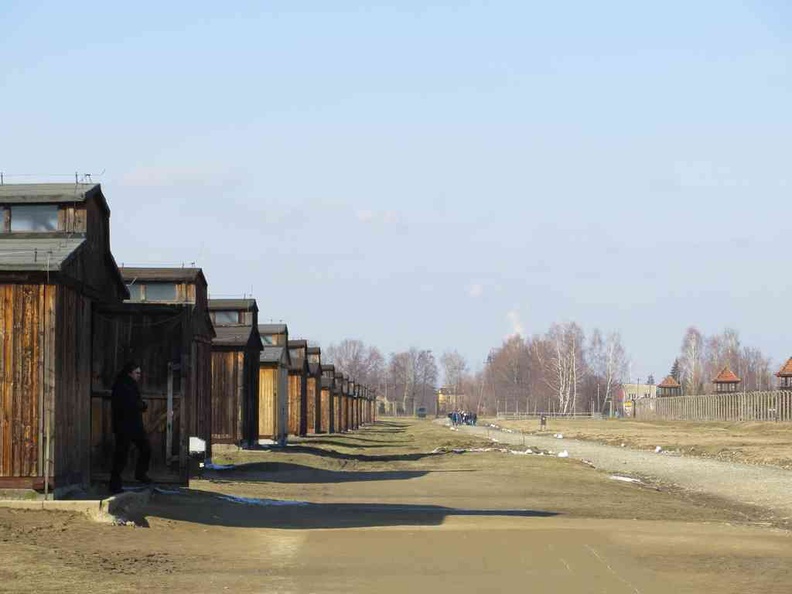
The museum also houses a collection of prisoner belongings. This include issue items, clothing, and identification yellow stars, triangles and colours used by the Germans to identify the various POWs. Also the prisoners face the everyday fear and trauma of being killed by German prison SS guards.
Living in daily fear
In addition, between accommodation camps, you can find shooting execution walls, electric fences and hanging posts throughout the living quarters. The mental stresses pushed some prisoners to commit suicide by running into guards or electric fence.
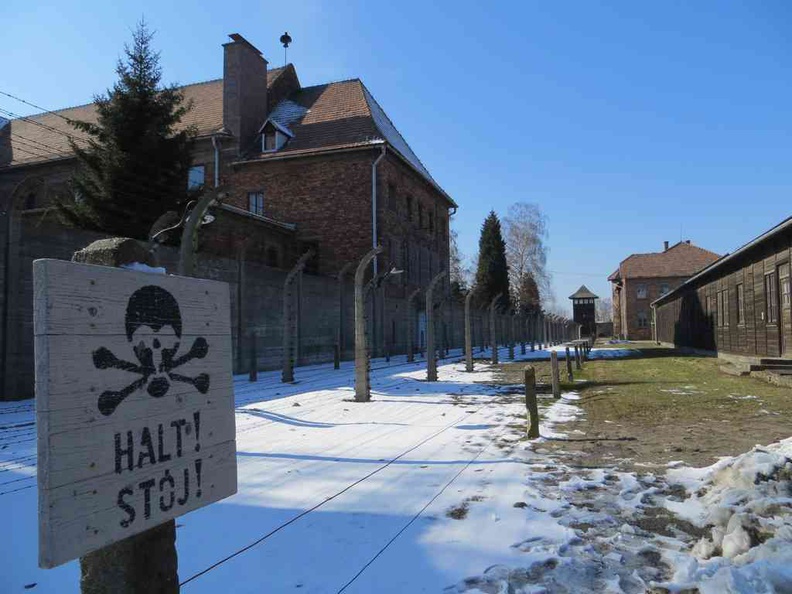
Escapes from the camp are rare, but not impossible. The museum covers some success stories of a handful of successful escapes. The SS conducted daily roll calls to account prisoner numbers. Also, prisoners could be publicly executed as a warnings to prisoners on the consequences of disobedience.
Moreover, there is an administrative building which the notorious Doctor Death worked in. He performed mad-scientist experiments on sterilization and twins. Some even mounting to possible crime against humanity as part of the eugenics efforts by the Nazi regime.
Personal belongings
Furthermore, the museum has a collection of SS garrison items which operates these camps. One of the administration buildings houses a gallery containing all recovered personal belongings of the holocaust victims.
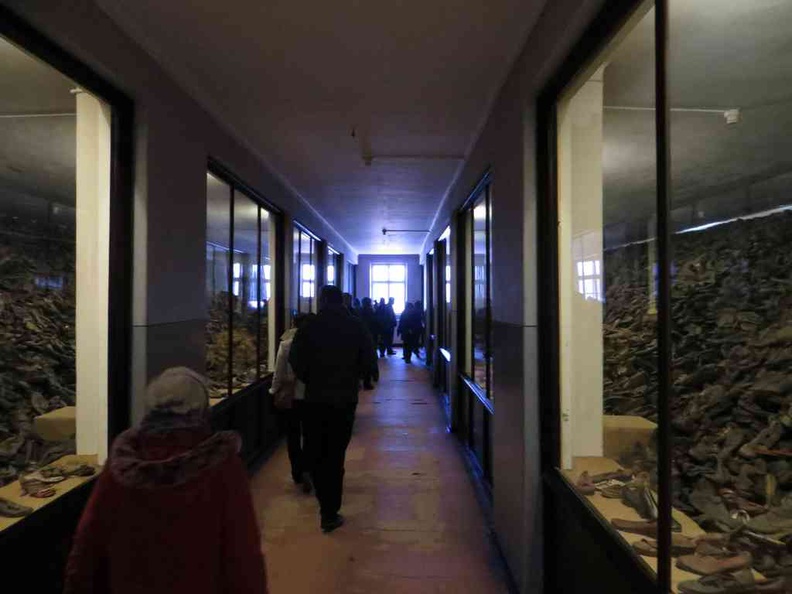
However, any prisoner who is disabled, too young or have special needs were deemed by the Germans of “no value” and were systematically exterminated.
The deportees personal items found when the camp was liberated, were displayed in galleries here. Items include clutches, 470 prostheses and orthoses pieces, eye-glasses, 3,800 suitcases, with 2,100 bearing the names of their owners. It provides an indicative record of the number of people killed in the death camp.
Moreover, the Nazi “Canada” team kept all the stolen precious metals and money from the dead in treasure vaults. It pokes a reference to Germans impression of Canada being a land of rich. Also, hair were strangely harvested from dead bodies as material to support the war.
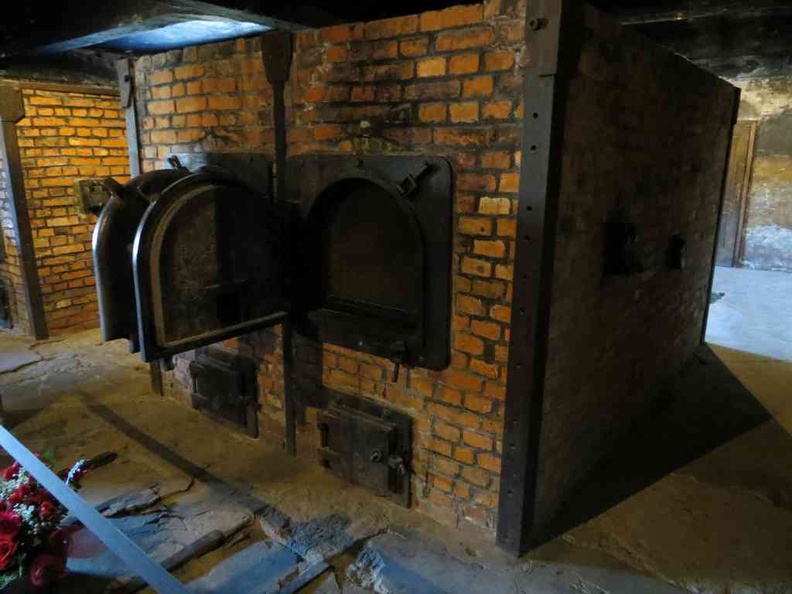
Additionally, to hide evidence of the atrocities during the German evacuation of the camp. After the war, the Germans destroyed most of the crematoria and “shower area” gas chambers. This is to prevent the allies from discovering them. However, the Germans didn’t manage to destroy all buildings. Presumably they left in a rush with the allies closing in on Poland.
Memorials in Auschwitz
Moreover, you can find a tall memorial tower built in memory to the 1.5 million lives lost in these grounds. Various tiles on the ground here represents the various groups who suffered or died, in memory to the different groups of deceased.

Furthermore, notably, more people died in Auschwitz camp than the total number of British and American losses of World War Two combined. The memorial reside near the vicinity of bombed out gas chamber grounds with several stones and plaques laid on the ground. Also, the surrounding trench and collapsed buildings remains of what used to be the underground extermination “shower” gas chambers and crematorium facilities.
Also, the Jewish population suffered the biggest causality count here. You can find stacked stones on the memorial ledges, typical in Jewish bereavement practices, placed by people who visit Jewish graves in an act of remembrance or respect for the deceased.
Additionally, compared to the Berlin Sachsenhausen camp, which you can visit as a day trip from the German City of Berlin, this Poland concentration camp is also one of the largest in size, and one of the many concentration camps conceived by Adolf Hitler’s German Nazi regime in World War 2.
All in all, a visit to Auschwitz concentration camp from the Poland, Krakow is pretty much an entire day trip affair, with the hour-long transportation time included. It take about 3 hours to explore all the galleries, museums and walk the vast camp grounds. It takes remembering one’s history so that such atrocities in history won’t repeat themselves again.
































